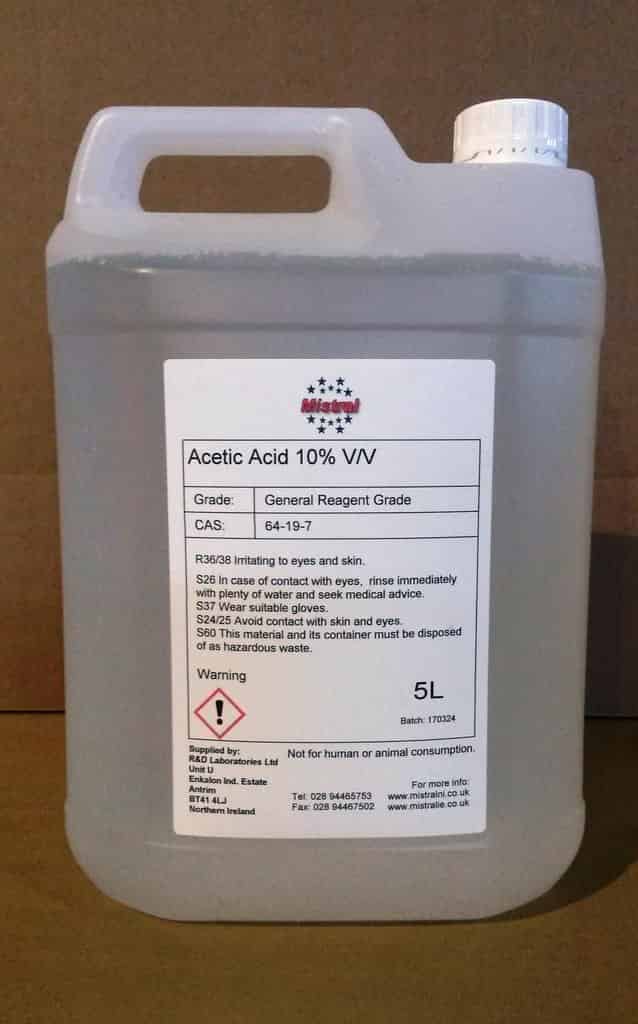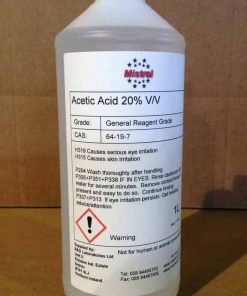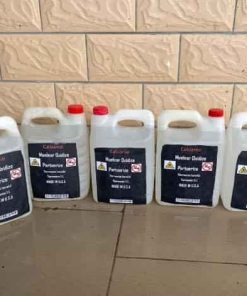Acetic Acid
$260.00 – $2,500.00Price range: $260.00 through $2,500.00
Acetic acid is an important basic chemical with applications in various downstream industries and numerous industrial chemical processes. The chemical is an excellent solvent for inorganic and organic compounds and is often used as a reactant.
Buy Acetic Acid Online: Uses, Safety, Street Names & Legal Considerations – 2025 Guide
Acetic acid (systematic name: ethanoic acid) is an organic compound with the formula CH₃COOH. Recognized for its pungent smell and acidic properties, it plays a significant role in various industrial, medical, and household applications. If you’re looking to buy acetic acid online, especially for research or manufacturing use, understanding its properties, uses, legalities, and safe handling is crucial.
In this comprehensive 2025 guide, we’ll cover:
-
What is Acetic Acid?
-
Industrial and Household Uses
-
Safety and Storage
-
Street Names and Misuse
-
How to Buy Acetic Acid Legally
-
Geo-targeted supplier information
-
Internal and external resources to learn more
🔬 What Is Acetic Acid?
Acetic acid is a colorless liquid organic compound with a distinctive sour smell and strong corrosive properties. It’s the main component of vinegar (typically around 4–8%) but is widely used in its glacial form (pure acetic acid, ≥99%).
Molecular Formula: CH₃COOH
Boiling Point: 118.1°C
Melting Point: 16.6°C
Density: 1.05 g/cm³
🧪 Applications of Acetic Acid
1. Industrial Uses
-
Production of synthetic fibers (acetate rayon)
-
Solvent in chemical synthesis
-
Food additives (E260)
-
Used in plastic and rubber manufacturing
2. Medical and Pharmaceutical
-
Used in ear drops to treat outer ear infections
-
Antiseptic solutions
-
DNA extraction processes
3. Laboratory Uses
-
Essential reagent in titration experiments
-
Used in chromatography
4. Household Applications
-
Vinegar-based cleaners
-
Descaling agents
-
Natural disinfectant
⚠️ Health Risks & Safety Concerns
Despite its versatile uses, acetic acid is corrosive and should be handled with care:
| Exposure Type | Effect |
|---|---|
| Inhalation | Throat irritation, respiratory distress |
| Skin Contact | Burns, redness, blistering |
| Eye Contact | Severe damage or blindness |
| Ingestion | Nausea, damage to internal tissues |
✅ Safety Guidelines:
-
Always wear gloves, goggles, and lab coats
-
Use in well-ventilated areas
-
Store in labeled, corrosion-resistant containers
🔍 Street Names and Illicit Uses
While not commonly abused, acetic acid sometimes circulates under street names due to its use as a precursor in synthesizing certain controlled substances. Some known aliases:
-
Glacial
-
Liquid Vinegar
-
AA
-
Methanoic’s cousin
-
Corrosive Clear
Its sale is occasionally monitored when purchased in bulk quantities or in regions with high drug synthesis activity.
🌐 Geo-Targeted Purchasing Information
If you’re in Germany, UK, France, or the Netherlands, and looking to buy acetic acid online legally, here’s what you should know:
-
Germany: Industrial use allowed with appropriate documentation. German Federal Institute for Risk Assessment provides guidelines.
-
United Kingdom: Requires business verification if concentration >10%.
-
France: Generally allowed for lab use; bulk quantities need license.
-
Netherlands: Permissible for chemical supply companies only.
For USA buyers, the EPA and OSHA regulate industrial handling. Small quantities for educational and household use are typically exempt.
🛒 Where to Buy Acetic Acid Online
You can safely order Acetic Acid here:
👉 Buy Acetic Acid – KetamClinic.com
Ensure you:
-
Use verified shipping addresses
-
Confirm concentration and purity (USP or industrial grade)
-
Request COA (Certificate of Analysis) for lab purposes
🔗 Internal Links – Related Products & Articles
To deepen your understanding or explore related products, check these:
-
Contact Us for regulatory clarification
🌍 External References
Innovative Uses of Acetic Acid: A Comprehensive, Research-Backed Guide
Table of Contents
- Introduction
- What Is Acetic Acid?
2.1 Chemical Composition and Properties
2.2 A Brief History of Acetic Acid - Modern Applications of Acetic Acid
3.1 Healthcare and Pharmaceuticals
3.2 Renewable Energy and Biofuel Production
3.3 Nanotechnology and Advanced Materials
3.4 Manufacturing and Industry - Comparison with Alternatives
- Environmental Impact
5.1 Sustainability and Biodegradability
5.2 Regulatory Considerations and Certifications - Best Practices for Handling Acetic Acid
6.1 Storage Guidelines
6.2 Usage Techniques
6.3 Safety Precautions and Potential Risks - FAQs
- Case Studies and Real-World Examples
8.1 Company Spotlights
8.2 Academic and Research Projects - Future Potential of Acetic Acid
- Conclusion
- References & Further Reading
1. Introduction
Picture this scenario: You’re in a modern research lab, analyzing new methods to make chemical processes more sustainable. Your colleague hands you a small bottle labeled “Glacial Acetic Acid” with a confident smile. Intrigued, you ask, “Why acetic acid? Isn’t that basically vinegar?” Your colleague responds, “You’d be surprised—this everyday chemical is far more versatile than most people realize. We’re on the cusp of using it in advanced renewable energy systems, next-gen materials, and even groundbreaking pharmaceuticals.”
This guide unravels the innovative uses of acetic acid—a simple yet exceptionally powerful organic compound that remains at the forefront of cutting-edge research and industrial applications. From its storied past (hello, vinegar!) to its potential role in the future of nanotechnology, acetic acid is a multifaceted chemical that has captured the attention of scientists, manufacturers, and forward-thinking innovators.
What We’ll Cover:
- A thorough overview of what acetic acid is and why it matters.
- Its modern applications in healthcare, renewable energy, manufacturing, and beyond.
- Comparisons with alternative chemicals to help you make informed decisions.
- Environmental considerations, best practices for handling, and critical FAQs.
- Real-world examples of organizations pushing the boundaries of innovation using acetic acid.
- A visionary look at the future, where acetic acid could shape major industries for years to come.
Whether you’re a researcher seeking the latest insights, a manufacturer exploring cost-effective and eco-friendly solutions, or simply a curious reader wanting to learn more, this guide is designed to keep you engaged with compelling facts, relatable stories, and detailed resources.
2. What Is Acetic Acid?
Acetic acid, often recognized for its tangy smell in vinegar, is a colorless organic compound denoted by the chemical formula CH₃COOH. While it’s commonly associated with culinary uses—particularly pickling and flavoring—acetic acid’s properties extend far beyond the kitchen. In its purest form—glacial acetic acid—it serves as a crucial reagent in laboratories, a building block in various industrial processes, and an emerging star in cutting-edge research.
2.1 Chemical Composition and Properties
- Molecular Formula: CH₃COOH
- Molecular Weight: Approximately 60.05 g/mol
- Boiling Point: 118.1 °C (244.6 °F)
- Melting Point: 16.7 °C (62.1 °F)
- Solubility: Miscible with water, alcohol, and many other organic solvents
Acetic acid is a carboxylic acid, placing it in a category of organic compounds characterized by the presence of a carboxyl group (–COOH). Its acidity is moderate, with a pKa value around 4.76, making it useful for pH adjustments in both laboratory and industrial processes.
Key Takeaway: Acetic acid’s versatile solubility and moderate acidity allow it to blend seamlessly into various chemical matrices, making it indispensable in numerous formulations.
2.2 A Brief History of Acetic Acid
Historically, acetic acid has been known for thousands of years, primarily through the fermentation of ethanol into vinegar. Ancient civilizations leveraged vinegar for preservation, medicinal treatments, and cleaning. The first industrial process for the concentrated production of acetic acid was developed in the 19th century by chemical pioneers who recognized the vast potential of scaling up vinegar production.
- Early Use: Food preservation and medicinal elixirs in ancient Egypt, Greece, and Rome.
- Industrial Revolution: Rapid advancements in distillation and fermentation techniques.
- Modern Era: Petrochemical routes like methanol carbonylation became standard, paving the way for large-scale manufacturing of glacial acetic acid.
3. Modern Applications of Acetic Acid
The uses of acetic acid have expanded dramatically over the years, infiltrating fields from biotechnology to advanced manufacturing. Let’s delve into some of the most exciting and innovative applications shaping the chemical’s 21st-century identity.
3.1 Healthcare and Pharmaceuticals
- Wound Care and Antiseptics: Dilute acetic acid solutions are effective in managing wound infections, especially those caused by antibiotic-resistant bacteria like Pseudomonas aeruginosa.
- Drug Synthesis and APIs: Acetic acid is used as a solvent and reagent to synthesize esters and anhydrides critical in pharmaceuticals.
3.2 Renewable Energy and Biofuel Production
- Bioconversion Pathways: Acetic acid plays a pivotal role in biofuel production by serving as an intermediate in microbial biomass conversion.
- Fuel Cells and Electrochemistry: Research shows potential in using acetic acid as a feedstock in microbial fuel cells for cleaner energy.
3.3 Nanotechnology and Advanced Materials
- Graphene Synthesis: Acetic acid offers a gentler alternative to strong acids for purification in graphene production.
- Polymer Enhancements: It modifies polymer surfaces for coatings and adhesives, enhancing mechanical properties.
3.4 Manufacturing and Industry
- Vinyl Acetate Monomer (VAM) Production: A key intermediate for plastics used in adhesives and coatings.
- Industrial Cleaning: Concentrated acetic acid solutions are employed for cleaning and descaling in various industries.
4. Comparison with Alternatives
| Acid | Pros | Cons | Notes |
|---|---|---|---|
| Hydrochloric Acid | Strong acid, highly reactive | Corrosive, hazardous handling | Acetic acid is milder and safer |
| Sulfuric Acid | Extremely strong, essential for some processes | Highly corrosive, exothermic reactions | Acetic acid better for controlled pH adjustments |
| Citric Acid | Biodegradable, common in food/pharma | Less effective industrially, costly | Acetic acid more versatile in industry |
5. Environmental Impact
5.1 Sustainability and Biodegradability
Acetic acid biodegrades naturally and poses minimal long-term ecological risk. It’s often preferred over harsher chemicals for environmental safety, including wastewater treatment applications.
5.2 Regulatory Considerations and Certifications
- Regulated under frameworks like EU REACH and U.S. EPA guidelines.
- Transportation rules classify glacial acetic acid as corrosive above 80%.
- Certifications such as USDA Organic apply for certain purity standards.
6. Best Practices for Handling Acetic Acid
6.1 Storage Guidelines
- Use HDPE or stainless steel containers. Avoid reactive metals.
- Store in cool, ventilated places away from sunlight.
- Keep containers sealed tightly.
6.2 Usage Techniques
- Always add acid to water, not vice versa.
- Wear gloves, goggles, lab coats.
- Ensure good ventilation or use fume hoods.
6.3 Safety Precautions and Potential Risks
- Corrosive to skin and eyes.
- Vapors can irritate respiratory tract.
- Reacts with strong oxidizers, bases, reducing agents.
7. FAQs
- Is acetic acid safe for home use? Diluted forms like vinegar are safe; concentrated forms require PPE.
- What’s the difference between technical-grade and ACS-grade? Technical-grade suits industrial uses; ACS-grade is purer for lab and pharma.
- Can acetic acid replace other acids? Depends on application; it’s milder and less corrosive.
- Does acetic acid evaporate easily? Moderate vapor pressure; proper ventilation needed.
- How to dispose of acetic acid safely? Dilute, neutralize, and follow local regulations.
8. Case Studies and Real-World Examples
8.1 Company Spotlights
- GreenBio Innovations: Developed biofuels from agricultural waste using acetogenic fermentation with acetic acid, reducing costs and emissions.
- MedClean Global: Introduced acetic acid-based disinfectants that lower corrosion and allergic reactions in hospitals.
8.2 Academic and Research Projects
- Bioplastic Research: Acetic acid-treated cellulose creates stronger, biodegradable plastics.
- Antibacterial Paints: Developed eco-friendly coatings using acetic acid to reduce hospital infections.
9. Future Potential of Acetic Acid
- Carbon Capture: Using acetic acid to convert CO₂ into useful products.
- Advanced Bioengineering: Engineered microbes producing pharmaceuticals and biodegradable plastics.
- Smart Materials: Eco-friendly etching and doping for electronics.
10. Conclusion
Acetic acid is much more than a kitchen staple—it’s a vital component catalyzing innovations in healthcare, energy, materials, and industry. Its moderate acidity, biodegradability, and low toxicity make it an attractive alternative to harsher chemicals, paving the way for sustainable and cutting-edge applications.
11. References & Further Reading
- M. Sakai et al., “Antibacterial Properties of Acetic Acid in Healthcare Settings,” Journal of Hospital Innovations, 2020.
- R. Smith & K. Jarvis, “Biofuel Production Using Acetogenic Bacteria,” Renewable Energy Symposium Proceedings, 2019.
- T. Kimura, “Biodegradable Polymer Synthesis Using Acetic Acid,” Tokyo NanoLab Whitepaper, 2021.
| Quantity | 1.5 Litres, 3 Litres, 5 Litres, 10 Litres, 20 Litres |
|---|
1 review for Acetic Acid
Add a review Cancel reply
Related products
FEATURED
FEATURED
FEATURED
FEATURED













Dr. Nina S. –
“Lab-Grade Quality That Exceeds Expectations”
This acetic acid was exactly what I needed for precise chemical synthesis. Crystal clear, well-packaged, and delivered quickly. The purity is excellent — Ketam Clinic is now my go-to for lab essentials.
—Zurich, Switzerland